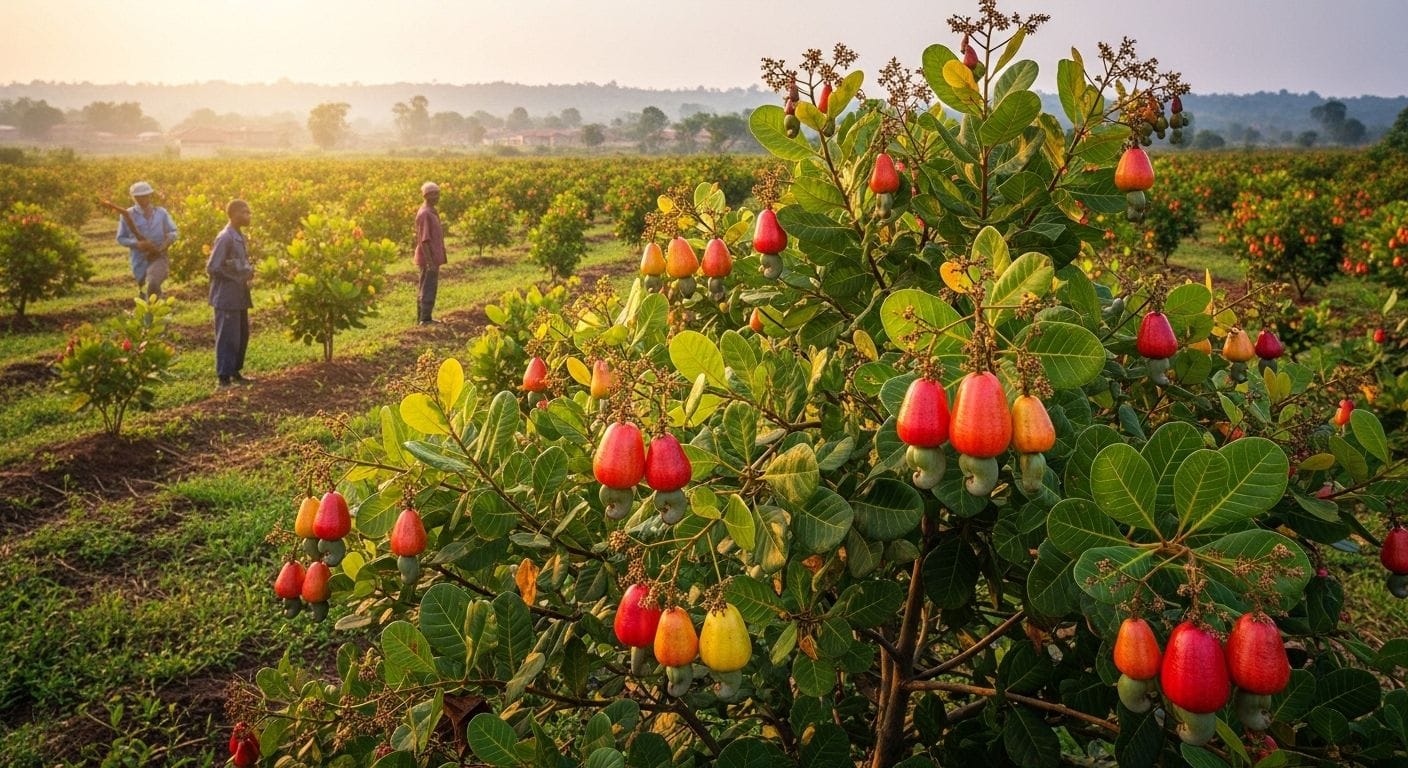Start a Profitable Cashew Farm in Ghana: Your Step-by-Step Guide for Entrepreneurs
Ghana stands as a titan in the global cashew market, controlling a significant portion of in-shell cashew exports. With strong government support and ideal growing conditions, the nation presents a golden opportunity for savvy investors and agricultural entrepreneurs. The demand for Ghanaian raw cashew nuts from countries like Vietnam and India remains robust, yet less than 10% of the harvest is processed locally, revealing a massive gap for value addition and profit. This article provides a comprehensive blueprint for anyone asking how to start a cashew farm profitable cashew farm cultivate Cashew in Ghana in Ghana, covering everything from soil preparation to navigating export regulations.
Understanding Ghana’s Cashew Landscape: A Market Overview
Before breaking ground, it’s crucial to understand the economic environment. Ghana’s cashew sector is a major foreign exchange earner, bringing in over USD 981 million in 2016 alone. The industry is dominated by small-scale farmers, but there is significant potential for commercial-scale operations.
- Key Production Hubs: The Bono, Ahafo, and Bono East regions are the heartland of cashew production, accounting for approximately 90% of the country’s output.
- Primary Export Markets: Vietnam and India are the largest importers of Ghanaian raw cashew nuts, purchasing over 99% of exports. Emerging markets like China, Saudi Arabia, and the U.A.E. represent new growth opportunities.
- Government & Financial Support: The Ghanaian government, through the Ministry of Food and Agriculture (MoFA), actively supports the sector with training and technical advice. Financial backing is available from institutions like the Agricultural Development Bank, various Rural Banks, ECOBANK, and other commercial banks.
A Complete Step-by-Step Guide for Entrepreneurs to Cultivate Cashew in Ghana
Launching a successful agricultural venture requires meticulous planning and execution. Follow these steps to build your cashew farm from the ground up.
Step 1: Land Selection and Preparation
The foundation of a productive farm is its location and soil quality. Cashew trees thrive in full sun and well-drained soil.
- Ideal Climate and Soil: The transitional and Savannah zones of Ghana are perfect. Cashews tolerate a range of soils but perform best in fertile sandy and loamy soils with good organic matter. Avoid heavy clay or stony soils. A soil test is highly recommended to guide fertilizer application.
- Land Preparation: The land must be thoroughly prepared by clearing all vegetation, followed by ploughing and harrowing. This ensures good drainage and water retention, which are vital for root development.
Step 2: Choosing the Right Variety and Planting
The quality of your planting material will determine your future yield. In Ghana, it is recommended to source materials from licensed state nurseries like those managed by MoFA.
- Recommended Varieties: The Brazilian cashew variety is the most common in Ghana, favored for its resilience against weather and diseases, high yields, and superb nut quality. Other varieties include those from Tanzania and Benin.
- Planting Material: Use grafted seedlings (clones) instead of seeds from random trees. Grafted materials are true-to-type, ensuring the desired characteristics of the parent tree are replicated.
- Layout and Spacing: A spacing of 10m x 10m is recommended. This layout allows for intercropping with annual crops like cowpea during the first few years, providing an early revenue stream. Ensure a one-meter distance between the cashew seedlings and intercrops to prevent competition.
Step 3: Farm Management and Nurturing
Consistent care is essential for healthy growth and maximum yield. This phase of the cashew cultivation guide for Ghana focuses on nurturing your investment.
- Nutrient Management: Apply fertilizer two weeks after transplanting. A mix of NPK (20:20:20) at 200g per plant or Sulphate of Ammonia (SOA) at 149g per plant is effective. Organic manure (10kg per plant) can be applied annually. Always apply fertilizer in a circular trench around the plant base when the soil is moist.
- Weed and Pest Control: Regular weeding is critical to reduce competition for nutrients and sunlight. The most significant pest is the Tea Mosquito Bug (Helopeltis spp.), which can be controlled with recommended pesticides like cyperdim.
- Pruning: In the first two years, remove all flowers to encourage the tree to develop a strong frame and canopy. Prune any side shoots that grow below the graft union about a month after planting.
Step 4: Harvesting and Post-Harvest Management
Proper harvesting and handling are key to preserving the quality and market value of your nuts.
- Harvesting: The peak harvest season in Ghana runs from January to June. Nuts are ready for collection when they naturally fall from the tree. The cashew apple, rich in Vitamin C, can also be harvested and processed into juice, jam, or alcohol.
- Drying and Storage: After collection, separate the nut from the apple. Dry the raw nuts in a shaded, well-ventilated area (not in direct sunlight) until the moisture content is below 14%. Pack the dried nuts in jute sacks and store them on pallets in a well-ventilated warehouse.
The Business of Cashew: From Local Processing to Export
Your journey as an entrepreneur doesn’t end at the harvest. Understanding the business side is crucial for profitability. With only 10% of nuts processed locally, there’s a significant opportunity for entrepreneurs to establish processing facilities to produce kernels for snacks, paste, and other value-added products.
Navigating Export Regulations
If you plan to export raw cashew nuts, you must follow the procedures outlined by the Ghana Export Promotion Authority (GEPA). Here is a simplified overview of the key steps:
| Step | Action Required | Key Authority/Department |
|---|---|---|
| 1 | Register your business. | Registrar General’s Department |
| 2 | Register as an exporter. | Ghana Export Promotion Authority (GEPA) |
| 3 | Obtain a Taxpayer Identification Number (TIN). | Ghana Revenue Authority (GRA) |
| 4 | Obtain necessary permits (e.g., Export Permit for cashew). | Permit-Issuing Agencies (e.g., Ghana Cocoa Board for cashew) |
| 5 | Arrange for inspection and testing of consignment. | Relevant Permit-Issuing Agency |
| 6 | Complete and submit Customs Declaration Form. | GRA – Customs Division (via ICUMS) |
| 7 | Present goods and documents for customs inspection and release for export. | GRA – Customs Division |
Overcoming Challenges in the Cashew Industry
While lucrative, cashew farming is not without its hurdles. Awareness and proactive management are key to mitigating risks.
- Poor Agronomic Practices: Many existing farms suffer from low yields due to inadequate fertilization, pruning, and pest management. Following the best practices outlined in this guide is essential for high returns.
- Pests and Diseases: The Tea Mosquito Bug can devastate new flushes and flowers. A consistent pest management strategy is non-negotiable.
- Market Fluctuations: Global commodity prices can be volatile. Consider value addition through local processing to insulate your business from raw nut price swings.
Conclusion: Your Path to a Thriving Cashew Enterprise
The Ghanaian cashew sector offers immense potential for determined entrepreneurs. From its fertile soils to strong international demand and government backing, the essential ingredients for success are in place. By combining diligent on-farm practices with sharp business acumen, you can successfully establish a rewarding venture. By following this step-by-step guide, entrepreneurs can confidently navigate the process of building a profitable cashew farming business in Ghana, contributing to both personal prosperity and the nation’s robust agricultural economy.











